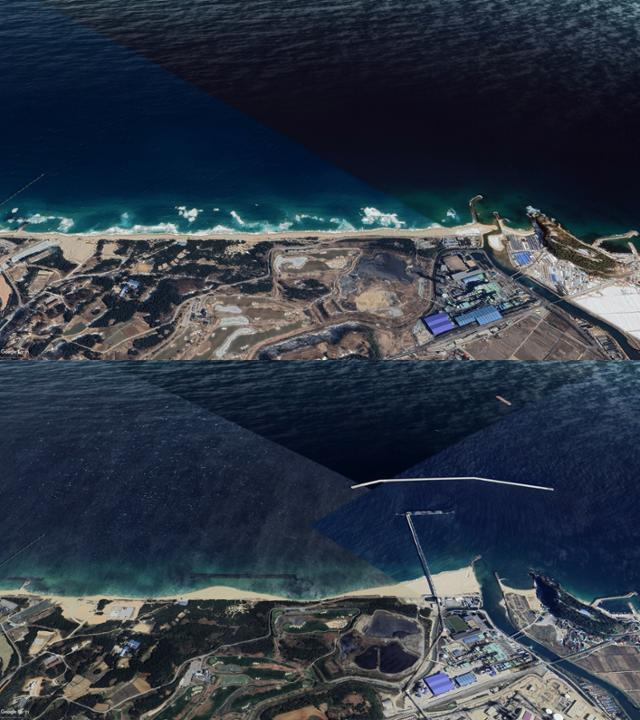WNAM REPORT: The government has spent nearly 2 trillion won ($1.5 billion) over several decades to address coastal erosion, yet the problem remains severe. Insufficient budget prioritization and inadequate management of preventive infrastructure have led to a continuous reduction in the nation’s land area, sparking concerns.
According to data received from the Ministry of Oceans and Fisheries by Rep. Lim Mi-ae of the main opposition Democratic Party of Korea, a total of 1.8 trillion won has been invested in coastal preservation projects between 2000 and June this year.
This represents only 40.8 percent of the originally planned 4.34 trillion won budget under the Coastal Maintenance Basic Plan. The significant reduction in the project budget is largely attributed to the financial struggles of local governments.
A national survey last year revealed that 43.3 percent of coastal areas were classified as either “at risk” (C-grade: 138 areas) or “severe” (D-grade: 18 areas) for erosion.
The rate of erosion concerns, which includes both at-risk and severe areas, increased steadily from 55.2 percent in 2017 to 62.4 percent in 2020.
However, since 2021, the percentage has remained in the 40 percent range due to an increase in the number of surveyed areas, from 250 to 360. Therefore, this decrease does not necessarily indicate a reduction in erosion.
Moreover, erosion prevention structures, which are crucial in mitigating coastal erosion, are not being properly maintained. After the installation of coastal protection infrastructure, responsibility for management is transferred to the local governments, as stipulated by the Coastal Management Act.
However, last year, 42 out of 373 areas required for post-installation management failed to submit their maintenance logs. The annual budget for inspecting these sites is only 200 million won, making thorough evaluations difficult.
In some cases, erosion prevention structures have exacerbated the problem. In Gangneung’s Haseong Beach, for example, the installation of an underwater breakwater as part of the Anin Thermal Power Plant project in 2020 was found to have accelerated sand loss, contributing to the worsening erosion.
Sacrifice for economic reasons
Critics say that insufficient consideration of erosion risks during the planning stages of these coastal developments is to blame.
Over the past decade, the land area of 11 major coastal cities in Korea has decreased by 396,535 square meters — equivalent to 55 football fields.
Professor Kim In-ho from Kangwon National University said, “Poor construction methods and improper placement of underwater breakwaters prevent them from functioning effectively.”
He emphasized that “our coastal territories, which serve as a space for public recreation, tourism, and a buffer against natural disasters, should not be sacrificed for economic reasons.”
The United Nations has recommended that countries develop long-term strategies to manage coastal areas and prepare for climate change-related disasters.
Countries like France, the United States and Ireland have implemented plans that predict sea-level rise and coastal changes over 30, 50 and 100 years, selecting high-risk areas and developing tailored responses.
“The issue of coastal erosion reflects a fundamental lack of a comprehensive management system,” Lim said. “A long-term strategy, including thorough evaluations of infrastructure and development, is urgently needed.”


